
The other cities we’ve visited during this journey through just a small part of India – Delhi, Agra, and Jaipur – have all been centers of secular power and wealth and contending fortunes through the ages. We’ve come to Varanasi to see more clearly another side of life, that of the deep spirituality that lies at the heart of the faiths drawn here on pilgrimage, as well as the traditional culture of one of the world’s oldest continuously inhabited cities.
Sarnath
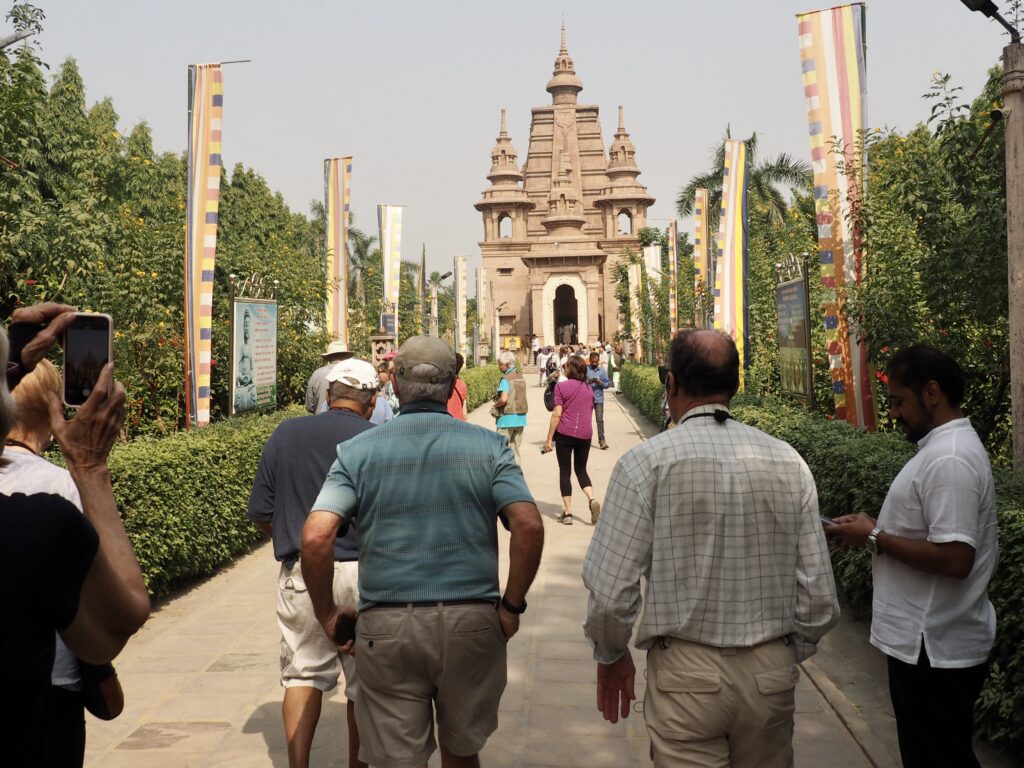




Sarnath, just outside Varanasi, is one of four places of pilgrimage Buddha recommended to his followers. It is where he preached his first sermon after attaining enlightenment at Bodh Gaya under the famous Bodhi tree. It is also where the Buddhist community was established when his first five disciples attained enlightenment.






The Temple was lined with murals of his life from the prediction of his birth to his death.



In 1931 a graft was taken of the Bodhi tree and planted here in Sarnath to establish a deer park and temple. Throughout town there are complexes set up to accommodate Buddhist visitors from different countries. We noticed the one catering to Thai Buddhists in particular. It wasn’t far from the chain coffee shop (no, Indian, not Starbucks) where we relaxed from our trip until things opened.

In the archeological park at Sarnath is a stupa built by Ashoka around 250 B.C.E. Unpacking that, Ashoka was the third Mauryan Emperor and ruled much of the Indian subcontinent, stretching all the way to Afghanistan. Part way through his career, he converted to Buddhism and played an important role in its spread. A stupa contains the relics of a Buddhist monk or nun and devotees use it for meditation, typically a walking meditation circumambulating the stupa. This stupa is one of the oldest surviving ones in India and was one of many established by Ashoka by spreading more widely the relics of the Buddha from the original eight stupas holding his remains. In the medieval period after the decline of Buddhism in India, it was plundered for building materials and the stone box and casket within holding the relics were removed.
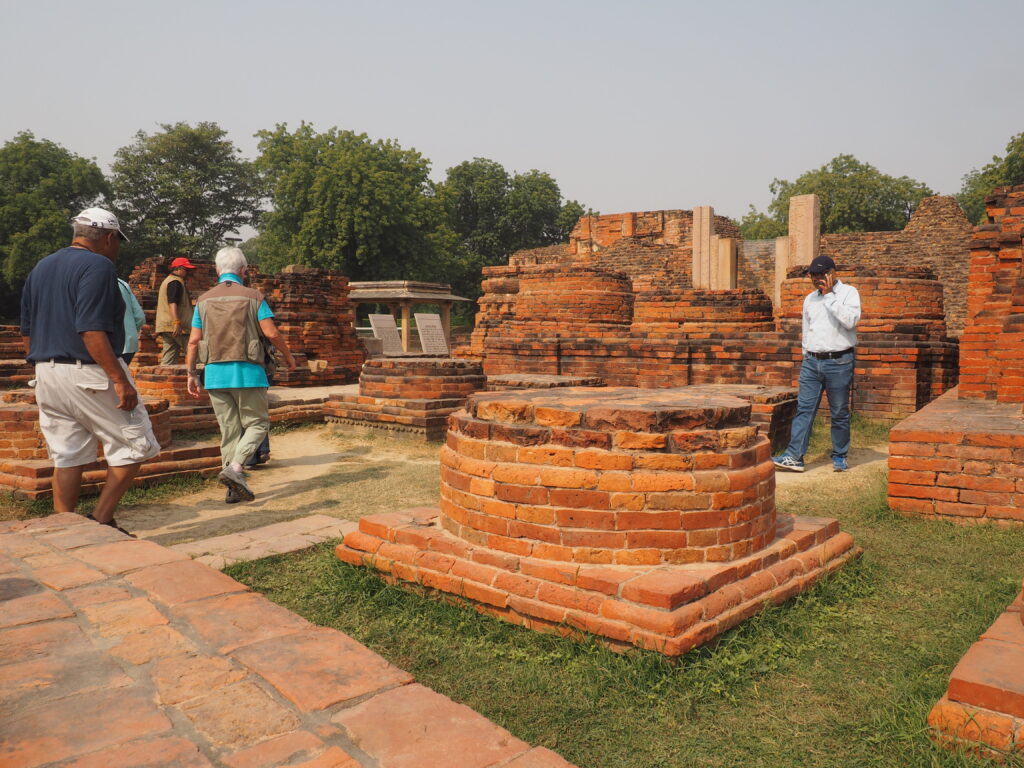

Near the stupa are the remains of a Buddhist monastery, apparently also from the time of Ashoka. There is no archaeological trace of the site of Buddha’s sermon or the launching of the faith with his five disciples. However, there is overwhelming literary evidence placing that here.
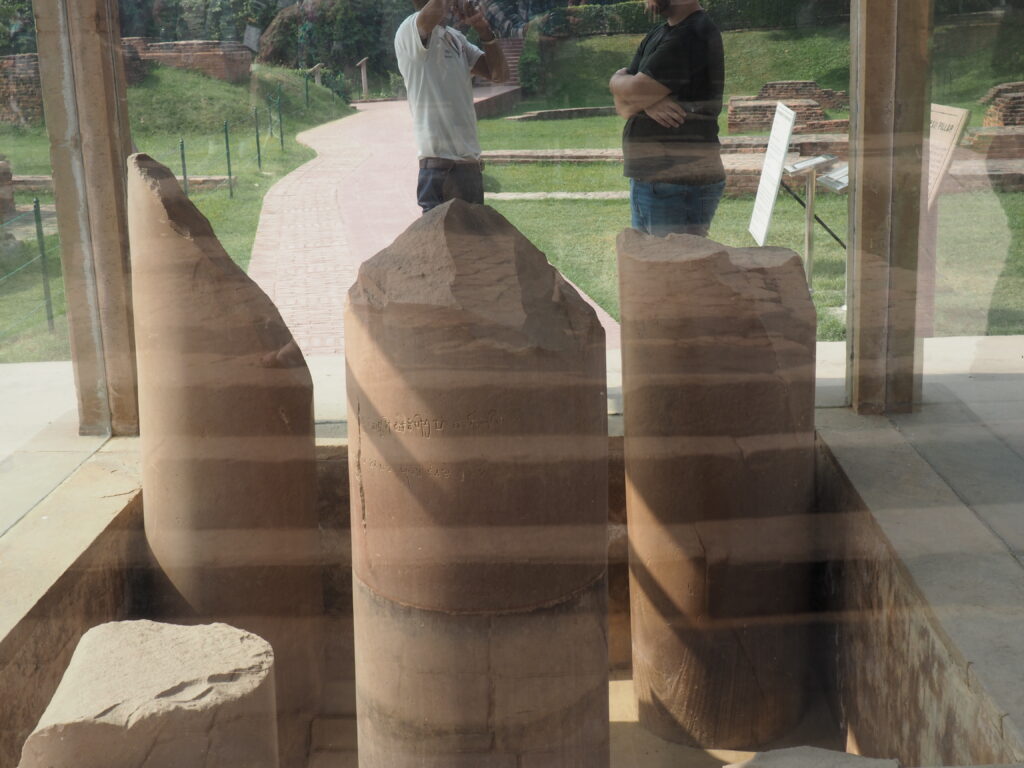

Among the ruins of the monastery, in a plexiglass case, are fragments of the pillar erected by Ashoka around 250 B.C.E. to commemorate the spot where the Buddha preached his first sermon almost 300 years previously. The Lion Capital which surmounted the pillar is housed in the nearby archaeological museum. You’ll notice that the wheel figure below the lions is featured on the Indian flag. The figure of the lions is the official emblem of the country.

Different animals are featured between the wheel figures, all related to Buddha. Here, the elephant refers to the white elephant seen by Buddha’s mother in a dream predicting his birth and greatness.














Works in the archeological museum recovered from the Sarnath site, mostly from the 1st century B.C.E. through the 12th century C.E.
The Ganges River in Varanasi









The Ganges is a busy river, especially in Varanasi, tasked with bringing purification, remission of sins, and assurance of release of the soul from the cycle of transmigration for those believers fortunate enough to die in Varanasi. Our guide always referred to the river by the name of its embodiment as a goddess (Ganga) and insisted on the inherent purity of its waters, telling us there’s a special bacteria that assures that purity, so that it is quite safe to bathe in and drink. There were no takers in our group.
We walked through the evening streets of Varanasi to the ghats (steps) down to the river where we boarded a boat to head out into the river for our first adventure on the Ganges.





The ghats were quiet as we set out on the water.



On the main crematorium ghat, however, demand keeps operations continuous, as the government now covers the cost of cremation for those who can’t otherwise afford it. One of the big costs is wood, as it requires 250 kg (helping to explain the large amounts of firewood we kept seeing on the highways and then in boats on the river). Perhaps as a reassurance to you, we can confirm that the cremations do not smell. This is due to the use of sandalwood, camphor and other spices. When the fire is finally extinguished, the family gathers the “relics,” some of which are retained at the crematorium with other relics and then washed away with the monsoons and some released immediately into the Ganges by the chief mourner of the family.


At sunset, following Hindu tradition, we each made an offering of deepak (oil lamps) to the river goddess Ganga from our boat idled in the middle of the river, before moving on to another ghat.
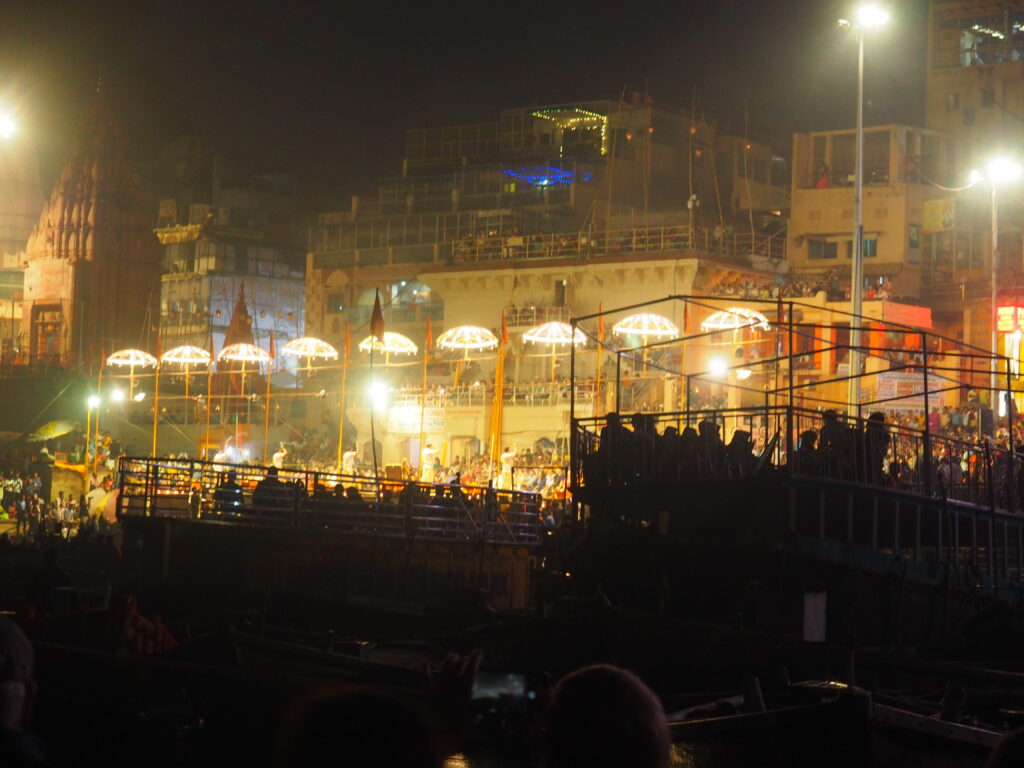



Every evening after sunset monks celebrate the Ganga Aarti with chanting, music, incense and choreographed thanksgiving to the river and the goddess Ganga. As you can see, it’s very well attended and a very colorful event.




In the morning, we returned to the ghats and our boat before sunrise, passing a small temple and catching a glimpse of one of the Jain Ascetics (upper right) who renounce everything, including clothing, and keep warm by covering their bodies with ashes. Jainism is one of the world’s oldest religions.








The buildings fronting the ghats are quite interesting.








But, at sunrise the ghats are full of the faithful who come to greet the sun, pray for an auspicious day and, bathe in the holy waters of the Ganges. For many pilgrims this is a first experience and deeply emotional.
A Moment for the Arts




In addition to the various workshops featuring textiles of different sorts, works in stone, and so forth, we found ourselves in a concert space created by the current star sitar player from a family of musicians tracing back 500 years. Yes, Ravi Shankar (also from Varanasi) was a friend of the family. First up, however, was a traditional dancer backed by tabla and a singer playing harmonium (introduced from France in the 17th century). In short, he was fabulous. The rhythmic complexity was astonishing, achieved by slapping and dragging his feet and jangling the 300 bells fastened to each of his ankles, interposed with hand movements and rapidly transforming poses to tell a story also being relayed by the singer. By the way, in training he uses 500 bells to increase his strength. Upper left is the Shiva posture.




Deobrat Mishra, the sitar artist, put Indian music into better context for his western listeners, explaining among other things that there is no harmony in Indian music, but more tones in between those in the western modes, with the Greek Lydian mode coming closest in feel to the music. Again, the rhythmic complexity and difficulty also made for an amazing performance and a fitting summing up of our experience in Varanasi.
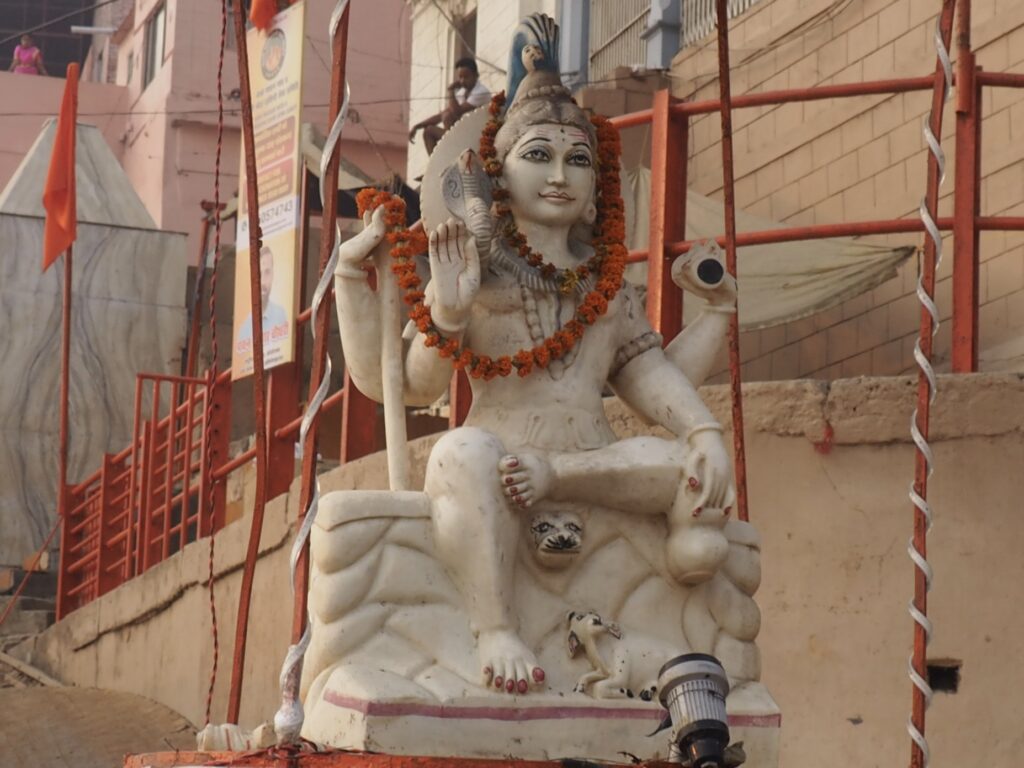
With our brief visits to Delhi, Agra, Jaipur and Varanasi, we barely scratched the surface of India, but better appreciate how shallow our understanding continues to be. Wondering where that came from sets you back through the bewildering layers of time and contending traditions and influences of many peoples making their way through the mountains, valleys and plains of Asia.

